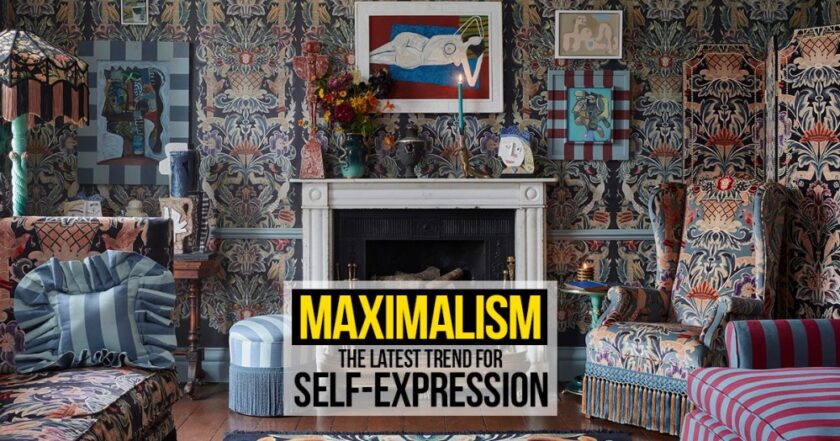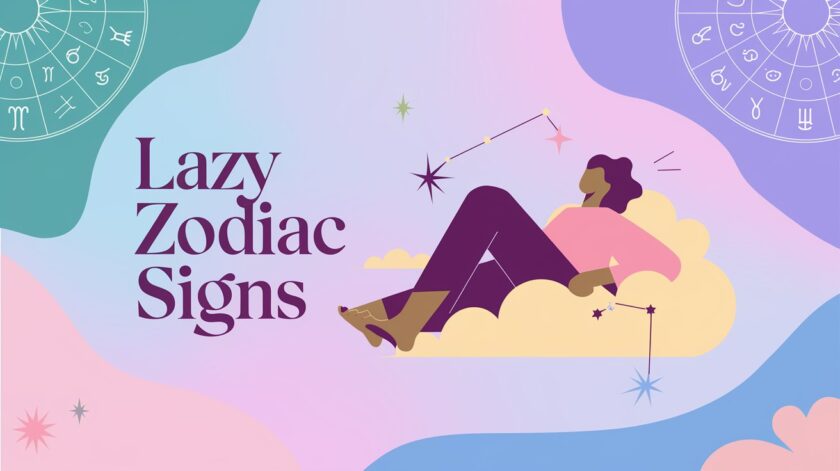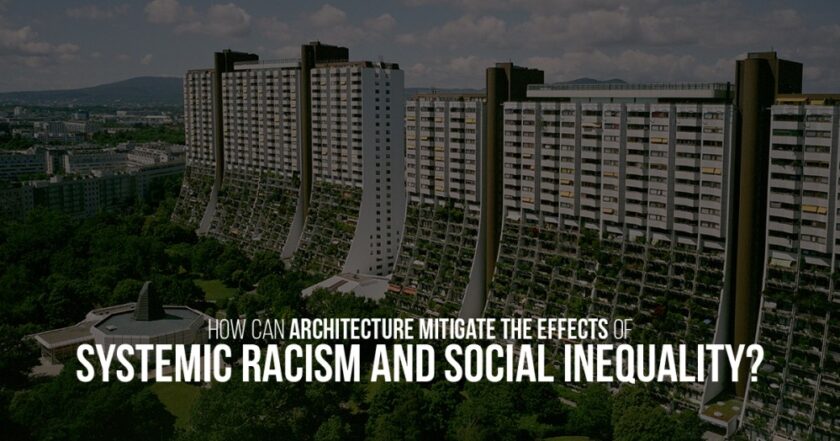Maximalism is considered a style for spectacle, a fashionable trend for eclectic individuals, those with extravagant personalities, and a slight tendency towards self-absorption and even narcissism. It is understandable to associate maximalism with the desire for attention, however, it is undeniable that there is a growing movement of self-expression present in the younger generations, and maximalism is an instrument for them to express themselves. From fashion to interior design, maximalism is popping, and social media has a lot to do with it.
What makes maximalism a great style to adopt is that it embraces change. If your mood shifts you are able to reflect it, without compromising your entire aesthetic since the whole concept revolves around accepting that there is no such thing as a superior aesthetic, rather than one that’s better suited for each individual, thus maximalism is a reflection of personality, permitting individuals to make their space unique. While minimalists believe that the absence of objects provides a calm and relaxing environment that benefits their mental health, maximalists search for euphoria and happiness, they live their authentic selves, without restrictions purely to enjoy their environment, which becomes a celebration of their own life. Their home décor has something to make them smile in every corner, it’s like getting to experience the inside of their head. This is a response to a shift in culture as having a unique style is considered trendy.
Maximalism and social media

The entrepreneur, science communicator, YouTuber, and novelist Hank Green delivered the perfect sentence to articulate the mindset of those who have embraced maximalism: ‘I hate minimalism, that is not my vibe. I want to feel like a Wizard who is surrounded by the collections of his many adventures.’ The concept of maximalism is purely, the idea that your home should be a space to celebrate your life, acting as a museum that portrays your lifestyle, allowing for people who witness your style to instantly understand your personality. Thus, it encourages ownership of elements with emotional value. Furthermore, it is possible to link the latest trend with social media, as there is a growing amount of information overload, that is generating chronically online individuals, therefore it is possible that the ever-increasing desire for over-decorated spaces is probably a response to the need for sensory stimulation, meaning that online media addiction is provoking a dependency on oversaturation which leads to more intensely decorative style choices.
Overconsumption is not great for the future.

Those who criticize maximalism usually do because it could potentially foment hoarding and overconsumption. Maximalist decoration is not meant to be functional, thus maximalists should question whether it is sustainable to encourage consumption. However, the reality is that maximalism doesn’t necessarily propose that consumption must take place continuously. In contrast to minimalism, it doesn’t deem new products as superior, a minimalist home is usually decorated with new objects since cleanness and modernity are pillars of the minimalist aesthetic, in contrast, maximalism accepts irregular, damaged, and second-hand products. A maximalist for example might grab an old closet from their grandparent’s home, having no impact over consumption and therefore being more sustainable. Furthermore, Maximalism revolves around the consumption of art and culture, and it supports cultural and folklore elements, it is heavily centered around the human experience, which is why it is considered a very humane form of consumption. Nonetheless, it is undeniable that people who embrace this style do not necessarily consume humanely, having a wardrobe that permits individuals to continuously shift between colours and textures isn’t affordable, thus a lot of people default to buying fast fashion products which undoubtedly damage the environment.

Maximalist behaviour
Maximalism can be explored in multiple forms, many practice it without doing so consciously, in a way maximalism simply means growing your style organically without regulation. For example, people who read a lot, and thus buy many books consume differently depending on their lifestyle. Some buy books by purely reacting to their literary interests, however, others put a lot of care in choosing which edition of a book they buy. In some cases, this is for economic reasons, while for others the motivation is aesthetical, for instance, some consumers may choose to selectively buy an edition that matches the rest of the books from a saga that they have already bought. A maximalist might not prioritize this, bookshelves are an excellent expression of someone’s personality as well as decorative elements in interior design. Some minimalists go to the extent of shifting books on their bookshelves by hiding the spine and leaving the pages out, ensuring a completely white shelf. A maximalist would never do this, instead, they would embrace the colour and spectacle that books provide in their homes.

Just a trend, or will it stick?
It is not surprising that this trend is growing, mostly because all trends are usually born out of the growing distaste for the latest one, in this case, minimalism. However, a factor that has pushed for maximalism to rise is the Covid-19 pandemic. People found themselves confined at home, and some came to the realization that they had thrown away too many objects, objects that they could’ve used all that time they spent inside, they also realized that they could do with a little decoration to make their homes feel warm and cozy. Maximalism is used to make spaces feel more humane, the children’s optician in Munich designed by Stephanie Thatenhorst, is an excellent example of how maximalism is utilized to better someone’s experience. It isn’t cold, and it isn’t purely functional, it’s personal, which makes its clients feel more comfortable.

While for some Maximalism might appear too loud and full of unnecessary elements, for others maximalism is a form of self-expression that has permitted them to inhabit spaces unapologetically. Maximalism is trendy because it makes room for everything. People want to feel included, and they also are desperate to feel represented, and this starts by representing themselves in their own spaces. It is very likely that maximalism will eventually be substituted, but for now, embracing one’s interest is considered fashionable, and even if the trend disappears we might all benefit from learning just how diverse people are and that there is truly room for everyone.
Reference:
Dezeen. (2021). Stephanie Thatenhorst uses bold patterns and colours to create a kid-friendly opticians in Munich. [online] Available at: https://www.dezeen.com/2021/09/29/stephanie-thatenhorst-rookies-eyewear-munich/.
www.youtube.com. (n.d.). explaining the gen z maximalism trend. [online] Available at: [Accessed 20 Sep. 2022].
Reel, B. (2020). The extreme homes of maximalists and minimalists – BBC REEL. YouTube. Available at: https://www.youtube.com/watch?v=LdMltDavSMc [Accessed 20 Sep. 2022].
Elizabeth Hay. (2023). Devon Cottage – Elizabeth Hay. [online] Available at: https://elizabethhaydesign.com/portfolio/gracies-cottage/ [Accessed 21 Dec. 2024].


As an architecture and interior designer, I am passionate about creating spaces that inspire and delight those who inhabit them. With over a decade of experience in the industry, I have honed my skills in both the technical aspects of design and the art of crafting beautiful, functional spaces.
After earning my degree in architecture, I began my career working for a prestigious firm where I was exposed to a wide range of projects, from commercial buildings to high-end residential properties. During this time, I developed a keen eye for detail and a deep appreciation for the importance of form and function in design.
In recent years, I have struck out on my own, founding my own design studio where I have been able to further explore my passion for interior design. I believe that a well-designed space can transform the way people live and work, and I take pride in working closely with clients to understand their needs and create spaces that exceed their expectations.
Throughout my career, I have been recognized for my innovative and creative approach to design, and have been honored with a number of awards and accolades. When I’m not working on design projects, you can find me exploring the outdoors or seeking inspiration in the world around me.



